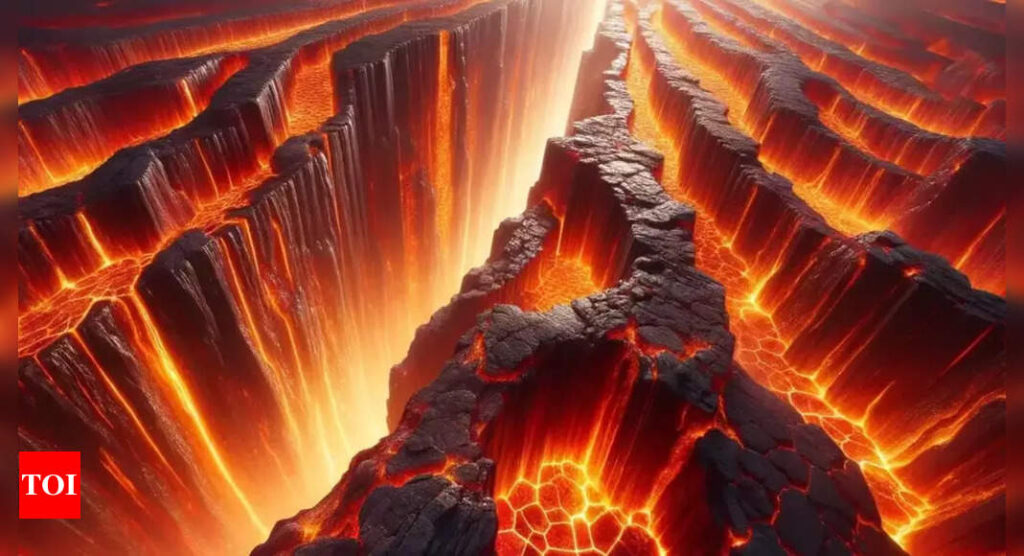[ad_1]
Caltech researchers have used advanced imaging techniques to explore heightened seismic activity in California‘s Long Valley Caldera, a dormant supervolcano, scitech daily said.
Since the 1980s, scientists have observed periods of significant unrest in a region within California’s Eastern Sierra Nevada mountains marked by earthquake swarms and ground inflation, rising nearly half an inch annually during these episodes.
Caltech researchers have now produced detailed underground images ever of the Long Valley Caldera, delving up to 10 kilometers into the Earth’s crust.
The research, led by Professor Zhongwen Zhan, was published in the journal Science Advances on October 18.
Zhan explains that “We don’t think the region is gearing up for another supervolcanic eruption, but the cooling process may release enough gas and liquid to cause earthquakes and small eruptions,” says Zhan. “For example, in May 1980, there were four magnitude 6 earthquakes in the region alone.”
The high-resolution images illustrate that the volcano’s magma chamber is covered by a solidified lid of crystallized rock, a result of the cooling and solidification of liquid magma.
To create these underground images, the researchers make inferences about the subsurface environment by measuring seismic waves from earthquakes.
The technique used by Zhan’s team employs fiber optic cables, akin to those used for internet services, to make seismic measurements using distributed acoustic sensing (DAS).
The 100-kilometer cable they used for imaging the Long Valley Caldera was equivalent to a stretch of 10,000 single-component seismometers. Over 18 months, the team measured over 2,000 seismic events, most of which were too small to be felt by people.
This research marks the first time that such deep, high-resolution images have been produced using DAS.
Previous images from local tomography studies have either been confined only to the shallow subsurface environment at depths of about 5 kilometers, or covered a larger area in lower resolution.
“This is one of the first demonstrations of how DAS can change our understanding of crustal dynamics,” says Ettore Biondi, DAS scientist at Caltech and the paper’s first author. “We’re excited to apply similar technology to other regions where we are curious about the subsurface environment.”
The team’s future plans involve using a 200-kilometer cable to delve even deeper into the Earth’s crust, reaching depths of around 15 to 20 kilometers, where the caldera’s magma chamber, its “beating heart,” is cooling.
Since the 1980s, scientists have observed periods of significant unrest in a region within California’s Eastern Sierra Nevada mountains marked by earthquake swarms and ground inflation, rising nearly half an inch annually during these episodes.
Caltech researchers have now produced detailed underground images ever of the Long Valley Caldera, delving up to 10 kilometers into the Earth’s crust.
The research, led by Professor Zhongwen Zhan, was published in the journal Science Advances on October 18.
Zhan explains that “We don’t think the region is gearing up for another supervolcanic eruption, but the cooling process may release enough gas and liquid to cause earthquakes and small eruptions,” says Zhan. “For example, in May 1980, there were four magnitude 6 earthquakes in the region alone.”
The high-resolution images illustrate that the volcano’s magma chamber is covered by a solidified lid of crystallized rock, a result of the cooling and solidification of liquid magma.
To create these underground images, the researchers make inferences about the subsurface environment by measuring seismic waves from earthquakes.
The technique used by Zhan’s team employs fiber optic cables, akin to those used for internet services, to make seismic measurements using distributed acoustic sensing (DAS).
The 100-kilometer cable they used for imaging the Long Valley Caldera was equivalent to a stretch of 10,000 single-component seismometers. Over 18 months, the team measured over 2,000 seismic events, most of which were too small to be felt by people.
This research marks the first time that such deep, high-resolution images have been produced using DAS.
Previous images from local tomography studies have either been confined only to the shallow subsurface environment at depths of about 5 kilometers, or covered a larger area in lower resolution.
“This is one of the first demonstrations of how DAS can change our understanding of crustal dynamics,” says Ettore Biondi, DAS scientist at Caltech and the paper’s first author. “We’re excited to apply similar technology to other regions where we are curious about the subsurface environment.”
The team’s future plans involve using a 200-kilometer cable to delve even deeper into the Earth’s crust, reaching depths of around 15 to 20 kilometers, where the caldera’s magma chamber, its “beating heart,” is cooling.
[ad_2]
Source link











More Stories
We can’t wait to face India in the final: Pat Cummins | Cricket News
Railways plans 3,000 additional trains in next 4-5 years to minimise number of waitlisted tickets | India News
Faridabad: Man dies after ‘falling from hotel room window’ while partying with friends